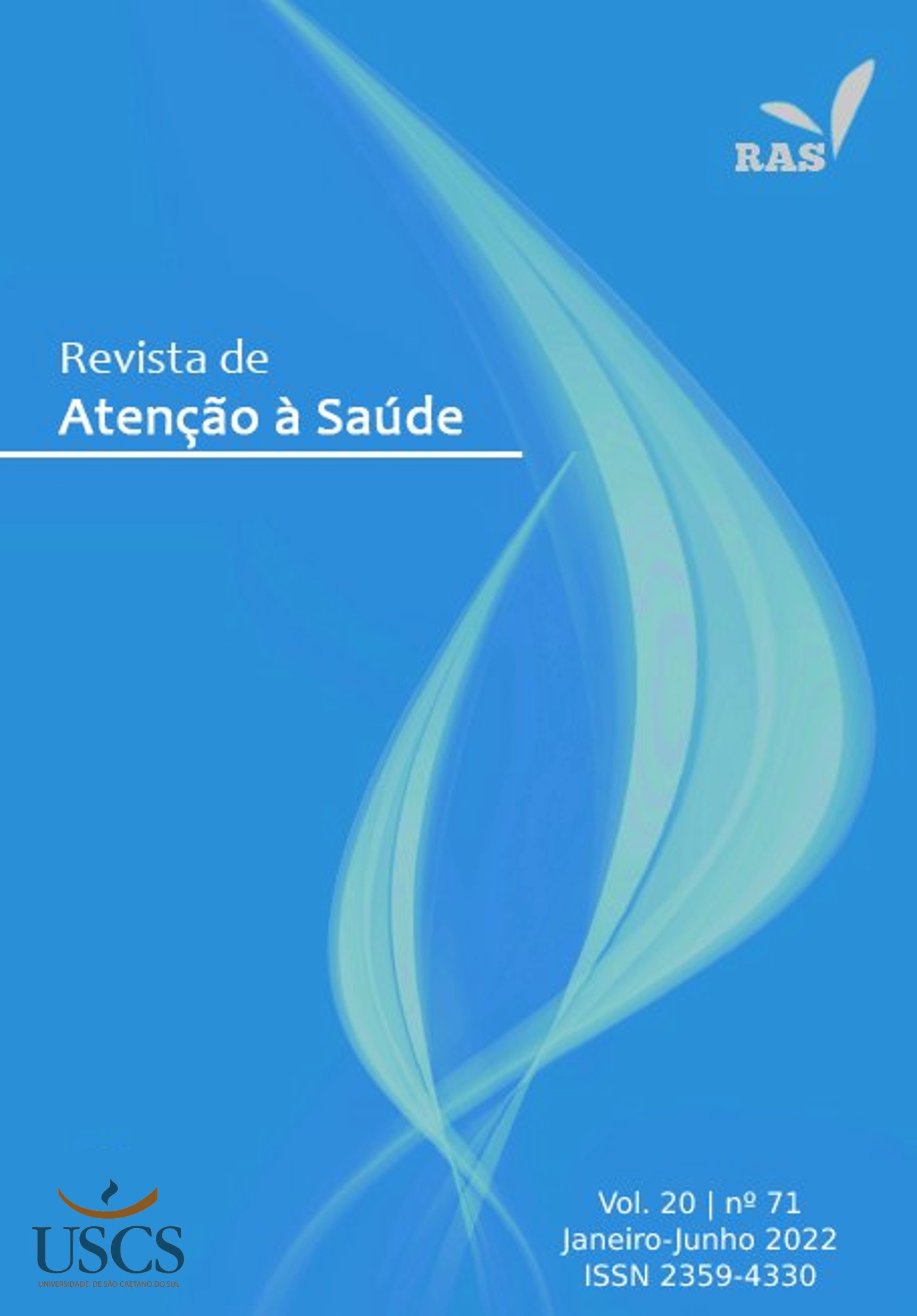Use of Cannabis sativa derivatives for the treatment of lymphomas: what is known so far?
DOI:
https://doi.org/10.13037/2359-4330.8213Keywords:
Anticancer agent, Cannabidiol, Hematologic neoplasmsAbstract
Introduction: Cannabis sativa is a plant of great medicinal interest due to its various constituents with pharmacological properties, the main ones being cannabidiol (CBD) and Δ9-tetrahydrocannabidiol (Δ9-THC). A number of studies report the potential of phytocannabinoids for various diseases, including cancer, with lymphomas being cancers that mainly affect the body's defense cells. Objectives: To analyze what scientific evidence there is regarding the antitumor potential of phytocannabinoids against lymphomas. Materials and Methods: This is an integrative literature review using articles indexed in the following databases: PubMed, BVS, SciELO, CAPES Periodical and Science Direct, using the English descriptors: “Cannabis”, “cannabidiol”, “lymphoma” and “apoptosis”, and Portuguese: “Cannabis”, “canabidiol”, “linfoma” and “apoptose”, combined with the Boolean operators AND and OR, published until August 2021. Results: Six studies were found, these being carried out in vivo, in vitro, ex vivo, or clinical trial. The most studied phytocannabinoid was CBD and all selected studies addressed only non-Hodgkin's lymphomas. All trials demonstrated the effectiveness of the use of phytocannabinoids in the treatment of non-Hodgkin's lymphomas, and the antitumor effect was demonstrated through the induction of apoptosis, cytotoxicity, antiproliferation, and in the clinical trial by redirecting malignant cells to secondary organs. Conclusions: Most of the results obtained come from in vitro or animal research, with a lack of clinical studies being detected; in addition, more studies are needed in relation to the mechanisms involved in the action of phytocannabinoids against lymphomas and other cancers, since they are still little known.
Downloads
References
Correa N. Trajetória da Incidência e Mortalidade das Neoplasias Hematológicas no Brasil. Observatório de Oncologia, 2019. Disponível em: https://observatoriodeoncologia.com.br/trajetoria-da-incidencia-e-mortalidade-das-neoplasias-hematologicas-no-brasil/. Acesso em: 14 ago. 2021.
Silva AMC, Andrade ACS, Sena ABS, Souza BSN, Gomes CV, Lima DV, et al. Boletins Epidemiológicos de Câncer: descrição dos principais tipos. 1ª ed., Recife, 2021.
Oliveira LSO, Cruz JAL, Rockenbach M, Dobrachinski L. Clinical and histopathological aspects of Hodkingand non-Hodkinglymphomas: a systematic review. Brazilian Journal of Developmen. 2021; 7(2):15808-15815. doi:10.34117/bjdv7n2-280.
Instituto Nacional De Câncer (INCA). Tipos de câncer. INCA, 2020. Disponível em: https://www.inca.gov.br/estimativa/introducao. Acesso em: 24 out. 2021.
Instituto Nacional De Câncer (INCA). Estimativa 2020. INCA, 2021. Disponível em: https://www.inca.gov.br/tipos-de-cancer/linfoma-de-hodgkin. Acesso em: 14 ago. 2021.
Reolon LZ, Rigo L, Conto F, Cunh L. Impacto da laserterapia na qualidade de vida de pacientes oncológicos portadores de mucosite oral. Rev. odontol. UNESP. 2017; 46(1):19-27. doi: http://dx.doi.org/10.1590/1807-2577.09116.
Lal S, Shekher A, Puneet, Narula AS, Abrahamse H, Gupta SC. Cannabis and its Constituents for Cancer: History, Biogenesis, Chemistry and Pharmacological Activities. Pharmacological Research. 2021; 163. doi: https://doi.org/10.1016/j.phrs.2020.105302.
Velasco G, Sanchez C, Guzman M. Anticancer engines of cannabinoids. Current Oncology. 2016; 23(1):23-32. doi: https://doi.org/10.3747/co.23.3080.
Mendes KDS, Silveira RCCP, Galvão CM. Revisão integrativa: método de pesquisa para a incorporação de evidências na saúde e na enfermagem. Texto contexto - enferm.. 2008; 17(4):758-764. doi: http://dx.doi.org/10.1590/S0104-07072008000400018.
Mazuz M, Tiroler A, Moyal L, Hodak E, Nadarajan S, Vinayaka AC, et al. Synergistic cytotoxic activity of cannabinoids from Cannabis sativa against cutaneous T-cell lymphoma (CTCL) in-vitro and ex-vivo. Oncotarget. 2020; 11(13):1141-1156. doi: https://doi.org/10.18632/oncotarget.27528.
Togano T, Kim N, Kim N, Park GS, Park AK, Bennet M, et al. The evaluation of cannabidiol‘s effect on the immunotherapy of Burkitt lymphoma. Biochemical and Biophysical Research Communications. 2019; 520(1):225-230. doi: https://doi.org/10.1016/j.bbrc.2019.10.001.
Mélen CM, Merríen M, Wasik A, Sonnevi K, Christersson B, Sander B, et al. A Clinical Trial of Cannabis As Targeted Therapy for Indolent Leukemic Lymphoma. Blood Journal. 2019; 134(1). doi: https://doi.org/10.1182/blood-2019-126693.
Xu, S. Does CBD Induce Apoptosis in Difuse Large B Cell Lymphoma? Te Young Researcher. 2018; 2(1):123-134.
McKallip RJ, Jia W, Schlomer J, Warren JW, Nagarkatti PS, Nagarkatti M. Cannabidiol-Induced Apoptosis in Human Leukemia Cells: A Novel Role of Cannabidiol in the Regulation of p22phox and Nox4 Expression. Molecular Pharmacology. 2006; 70(3):897-908. doi: doi: 10.1124/mol.106.023937.
McKallip RJ, Lombard, C, Fisher M, Martin BR, Ryu S, Grant S, et al. Targeting CB2 cannabinoid receptors as a novel therapy to treat malignant lymphoblastic disease. Blood Journal. 2002; 100(2):627-634. doi: https://doi.org/10.1182/blood-2002-01-0098.
Herrera B, Carracedo A, Zaera MD, Pulgar TG, Guzmán M, Velasco G. The CB2 canabinoid The CB2 cannabinoid receptor signals apoptosis via ceramide-dependent activation of the mitochondrial intrinsic pathway. Experimental Cell Research. 2006; 312(11):2121-2131. doi: https://doi.org/10.1016/j.yexcr.2006.03.009.
Huniadi A, Sorian A, Iuhas C, Bodog A, Sandor MI. The effect of Cannabis in the treatment of Hodgkin’s lymphoma in a pregnant patient - extensive case report and literature review. JBUON, 2021; 26(1):11-16.
Costa JLGP, Maia LO, Mattos PO, Villares JC, Esteves MAF. Neurobiology of Cannabis: from the endocannabinoid system to cannabis-related disorders. Jornal Brasileiro de Psiquiatria. 2011; 60(2):111-122. doi: https://doi.org/10.1590/S0047-20852011000200006.
Matos AFG. O sistema endocanabinóide: novo paradigma no tratamento da síndrome metabólica. Arquivos Brasileiros de Endocrinologia & Metabologia. 2006; 50(2):390-399. doi: https://doi.org/10.1590/S0004-27302006000200025.
Russo EB, Hohmann A. Role of Cannabinoids in Pain Management. Comprehensive Treatment of Chronic Pain by Medical, Interventional, and Integrative Approaches. 2013; 181-197. doi:10.1007/978-1-4614-1560-2_18.
Pereira PG, Pugliese FS, Silva MS, Andrade LG, Neto SR. O Uso do canabidiol em Paciente com Epilepsia. Revista Ibero-Americana de Humanidades, Ciências e Educação-REASE. 2021; 7(9):432-441. doi: https://doi.org/10.51891/rease.v7i9.2225.
Scott KA, Dennis JL, Dalgleish AG, Liu WM. Proteínas de choque térmico inibidoras podem potencializar o efeito citotóxico do canabidiol em células de glioma humano. Anticancer Reserch. 2015; 35(11):5827-5837.
Shrivastava A, Kuzontkoski PM, Groopman JE. Cannabidiol Induces Programmed Cell Death in Breast Cancer Cells by Coordinating the Cross-talk between Apoptosis and Autophagy. Molecular Cancer Therapeutics. 2011; 10(7):1161-1172. doi: 10.1158/1535-7163.MCT-10-1100.
Sharma M, Hudson JB, Adomat H, Guns E, Cox ME. In Vitro Anticancer Activity of Plant-Derived Cannabidiol on Prostate Cancer Cell Lines. Scientific Research. 2014; 5:806-820. doi: http://dx.doi.org/10.4236/pp.2014.58091.
Flygare J, Gustafsson K, Kimby E, Christensson B, Sander B. Cannabinoid receptor ligands mediate growth inhibition and cell death in mantle cell lymphoma. FEBS PRESS Science Publishing by Scientists. 2005; 579(30):6885-6889. doi: https://doi.org/10.1016/j.febslet.2005.11.020.
Gustafsson K, Christenson B, Sander B, Flygare F. Cannabinoid Receptor-Mediated Apoptosis Induced by R(+)-Methanandamide and Win55,212-2 Is Associated with Ceramide Accumulation and p38 Activation in Mantle Cell Lymphoma. Molecular Pharmacology. 2006; 70(5):1612-1620. doi: https://doi.org/10.1124/mol.106.025981.
Guo JR, Wang H, Jin XJ, Jia DL, Zhou X, Tao Q. Effect and mechanism of inhibition of PI3K/Akt/mTOR signal pathway on chronic neuropathic pain and spinal microglia in a rat model of chronic constriction injury. Oncotarget. 2017; (8):52923-52934. doi: https://doi.org/10.18632/oncotarget.17629.
Hildeman DA, Mitchell T, Teague TK, Day BJ, Kappler J, Marrack PC. Reactive oxygen species regulate activation-induced T cell apoptosis. Immunity. 1999; 10(6):735-744. doi: https://doi.org/10.1016/S1074-7613(00)80072-2.
Massi P, Vaccani A, Ceruti S, Colombo A, Abbracchio MP. Antitumor effects of cannabidiol, a nonpsychoactive cannabinoid, on human glioma cell lines. The Journal of Pharmacology and Experimental Therapeutics. 2004; 308(3):838-845. doi: https://doi.org/10.1124/jpet.103.061002.
Pereira WO, Amarante-Mendes GP. Apoptosis: a Program of cell death Or cell disposal? Scand J Immunol. 2011; 73:401 – 407. doi: https://doi.org/10.1111/j.1365-3083.2011.02513.x.
Downloads
Published
Issue
Section
License
Copyright (c) 2022 Taynara Maris da Silva, Lara Luiza Freitas de Oliveira, Anna Carolina de Moura Costa, Joaquim Maurício Duarte Almeida , Farah Maria Drumond Chequer

This work is licensed under a Creative Commons Attribution-NonCommercial-NoDerivatives 4.0 International License.
Policy Proposal for Journals offering Free Delayed Access
Authors who publish in this magazine agree to the following terms:
- Authors maintain the copyright and grant the journal the right to the first publication, with the work simultaneously licensed under a Creative Commons Attribution License after publication, allowing the sharing of the work with recognition of the authorship of the work and initial publication in this journal.
- Authors are authorized to assume additional contracts separately, for non-exclusive distribution of the version of the work published in this magazine (eg, publishing in institutional repository or as a book chapter), with the acknowledgment of the authorship and initial publication in this journal.
- Authors are allowed and encouraged to publish and distribute their work online (eg in institutional repositories or on their personal page) at any point before or during the editorial process, as this can generate productive changes, as well as increase impact and citation of the published work (See The Effect of Open Access).









